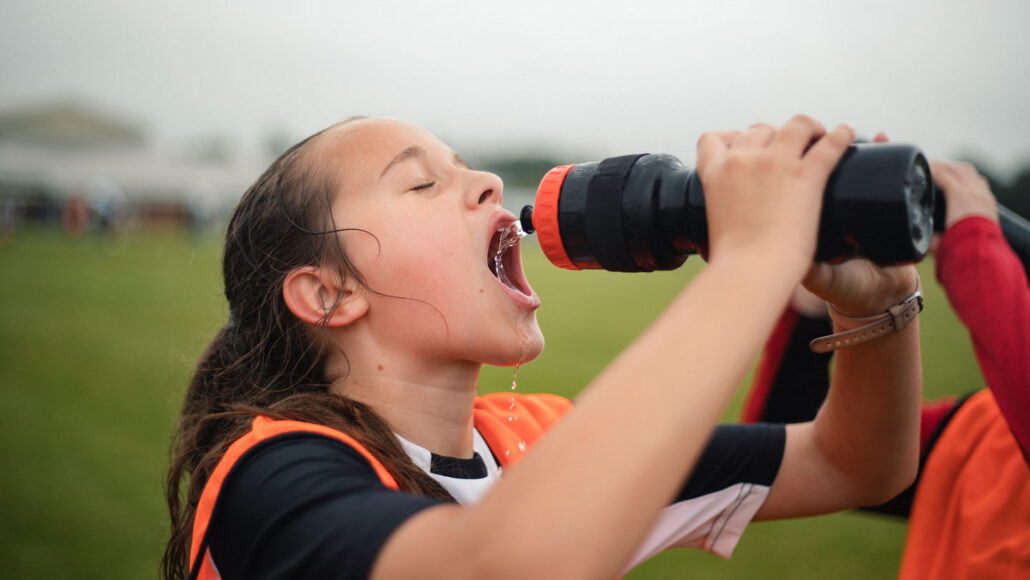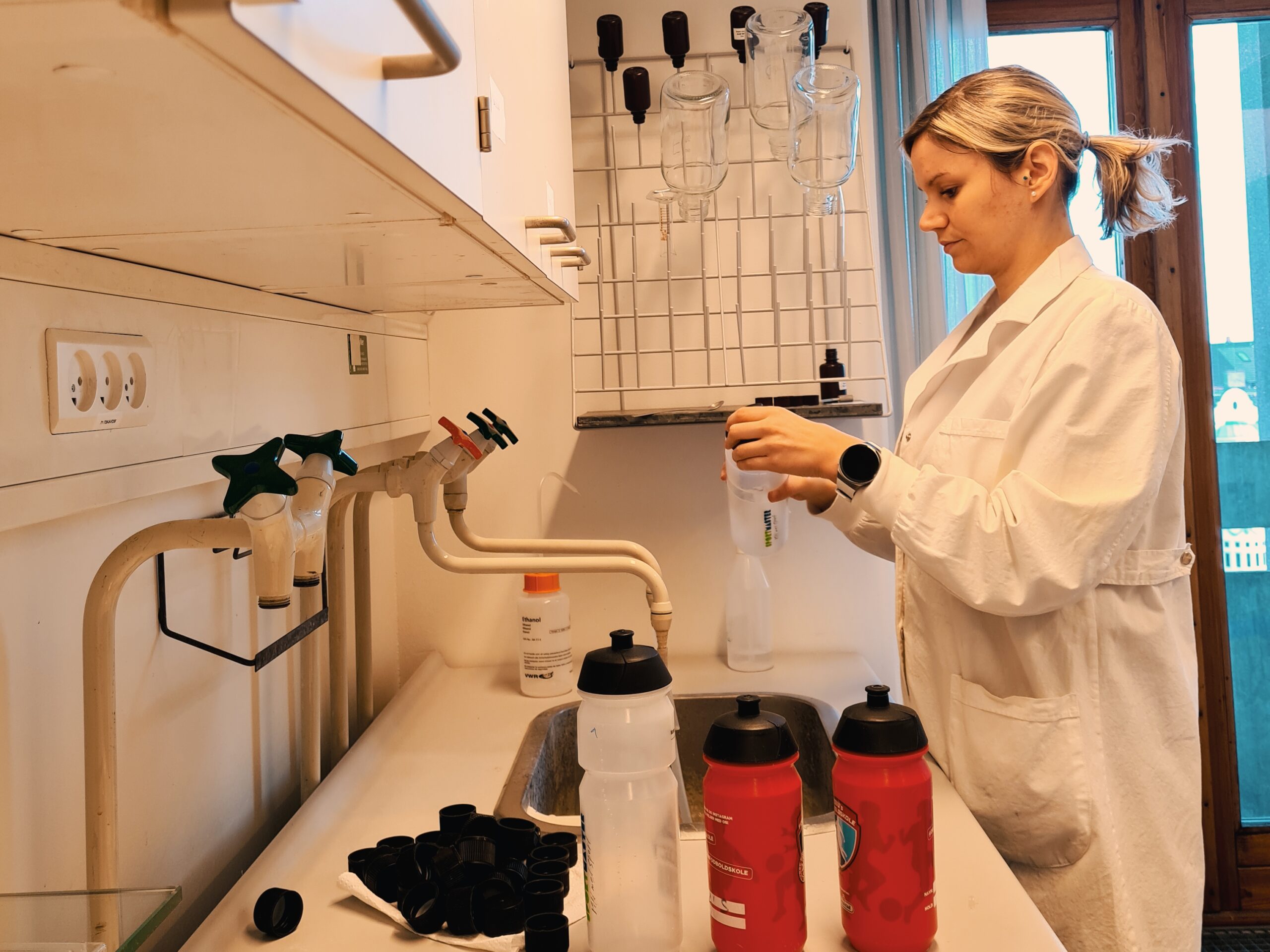Reusable plastic bottles release hundreds of pollutants into water
Running the plastic through the dishwasher frees even more chemicals

In a new study, reusable plastic sport bottles released hundreds of chemicals into drinking water.
SolStock/E+/Getty Images Plus
Plastic sports bottles shed hundreds of chemicals into the water they hold, a new study finds. The containers release even more pollutants after being run through a dishwasher. Although some of the chemicals might be harmful, it’s not yet known whether there’s any health risk from the amounts that end up in the water.
Scientists had known for years that chemicals can leach out of plastic. Some of those chemicals can be toxic. Manufacturers have removed some of the more worrisome chemicals, such as bisphenol A (BPA), from plastic products, such as water bottles. But little is known about what other chemicals might leave these products.
What’s more, until recently, scientists lacked the tools to detect many of the compounds that plastics may shed. New tools now make it possible to detect some of these unknown pollutants, says Kurunthachalam Kannan. He was not involved in the new study. But he’s a chemist at New York University in New York City. For years, he has screened for many such pollutant chemicals in the environment.
Two chemists at the University of Copenhagen in Denmark have now used those new analytical tools to study water from sports bottles. Selina Tisler and Jan Christensen now report that these reusable water bottles released hundreds of plastic-related chemicals into the water they held — chemicals that hadn’t been in the starting water. The team describes its findings in the May 5 Journal of Hazardous Materials.
Many, many migrating pollutants
Christensen, a soccer coach, noticed that players on his team regularly drank water from reusable plastic sports bottles. Sometimes the players complained their water smelled or tasted a bit like plastic. This was usually after the water had been sitting in the bottles for hours. Christensen decided to see if he could figure out why.
He enlisted the help of Selina Tisler, a scientist in his lab. At the time, she recalls, “We didn’t know what we were looking for.”

They let water sit for 24 hours in new bottles, in used bottles and in bottles that had just come out of a dishwashing machine. Afterward, they used mass spectrometry to test the water. That device can essentially weigh (get the mass) of various chemicals in a sample to identify them. Tisler and Christensen compared what they found in the water from plastic bottles to substances present in water that had been stored in glass.
And they found a big difference.
More than 400 different compounds had migrated from new plastic bottles into the water. Many were linked to “plasticizers.” These chemicals make the bottles squeezable. Other compounds were slip agents. Manufacturers add these to make plastic products slide easily out of the molds used to shape them. “It’s like how you would oil a baking pan so the cake doesn’t stick to the sides,” explains Tisler. Some chemicals were related to inks. These can give the bottles color or make them look shiny.
Water stored in older plastic bottles contained the highest levels of plastic-related chemicals. Running the bottles through a dishwasher worsened the leaching. After a single wash cycle, more than 3,500 different compounds ended up in a bottle’s water. Many of these were related to dishwasher soap and might remain even after a second rinse. The pollutants appeared to stick more to the plastic bottles than they did to glass ones. Dishwashing also appeared to boost the release of a plastic’s chemicals.
A leaching lesson
Pat Hunt does not find the new data surprising. She’s a reproductive biologist at Washington State University in Pullman who has studied plastic leaching. Heat can cause chemicals to migrate out of plastics, she explains. Hot water in a dishwasher helps to clean and sanitize dishes. But plastics that are repeatedly exposed to high heat can start to break down. “Plastics just shouldn’t go in the dishwasher,” she concludes.
Hunt learned this the hard way.
In the late 1990s, she found that a hormone-mimicking chemical — BPA — had leached out of the plastic cages and water bottles that she used for the mice in her lab. She had cleaned and sanitized the equipment in a dishwasher. Afterward, BPA (a building block of polycarbonate plastic) tainted the animals’ food and drinking water. Mice exposed to this chemical later had trouble getting pregnant.
This was some of the earliest evidence showing that BPA could mess with reproduction.
Tisler and Christensen’s study turned up no sign of BPA in the water stored in sports bottles. But some of the chemicals they did detect — including some plasticizers and compounds used to color bottles — may similarly disrupt hormones.

Educators and Parents, Sign Up for The Cheat Sheet
Weekly updates to help you use Science News Explores in the learning environment
Thank you for signing up!
There was a problem signing you up.
Moving forward
The Danish team identified some chemicals that are potentially harmful. Future studies could determine how much of each chemical is there, says Kannan. And that’s important, he adds. Just because a chemical is in water doesn’t mean it will cause problems. Much of the risk will depend on how much of a chemical actually gets into the body, he explains.
Hunt agrees. “This study represents a starting point,” she says. It gives researchers clues about what chemicals may be present in water from reusable bottles. But it doesn’t reveal what risks the now-polluted water may pose. Indeed, very little is known about many of the chemicals that were detected in the study. More research is needed to learn what these chemicals may do in the body, says Hunt.
Still, Kannan says, lowering exposures to plastic-related chemicals is probably a good idea. He recommends using glass or stainless steel water bottles over plastic when possible.
“If you do use a plastic sports bottle, fill it up and use it right away,” Tisler adds. “It’s best not to store water in them overnight or for long periods of time.”







